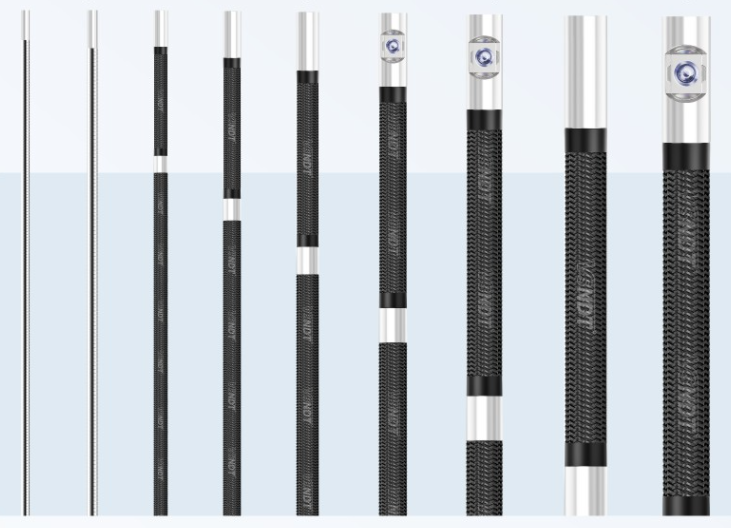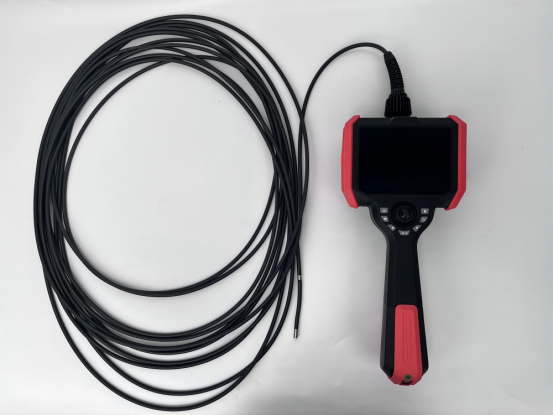Want to know more?
Don't miss any product updates on our industrial borescopes

Industrial borescope
solution service provider
Company Address
Office : 18F, Pingshanshouzuo, Pingshan District, Shenzhen,Guangdong
Contact Info
Ph: +86-0755-89588241

The materials used for the insertion tubes of industrial endoscope ,and are mainly selected according to their application environment and needs. The following are some common hose materials and their characteristics:

Advantages: high strength, good flexibility and durability, able to work in high temperature environment (generally 300℃), and high image transmission quality.
Disadvantages: expensive and difficult to customize.
Application scenarios: suitable for occasions with high requirements for durability and image clarity, such as aerospace, petrochemical and other fields.

Advantages: good high temperature resistance, excellent electrical insulation, good chemical stability, not easy to hydrolyze, and can contact the human body, with a wide range of uses.
Disadvantages: easy to deform under pressure, high cost.
Application scenarios: mainly used in special industrial environments that require high temperature resistance and electrical insulation, such as internal inspection of electrical equipment, maintenance of high-temperature instruments, etc.
Advantages: composed of metal springs, with high flexibility and scalability, can bend and stretch freely, adapt to complex paths, and have strong wear resistance.
Disadvantages: It is easy to scratch the metal material when the pipe diameter is large, and the softness is too high and is not suitable for straight pipes.
Application scenarios: often used for inspections that need to enter bends or narrow spaces, such as internal inspections of turbine engines.
Advantages: usually made of flexible rubber or plastic, low cost, light and flexible, with a certain thrust, can be pushed forward a long distance.
Disadvantages: relatively short service life.
Application scenarios: suitable for low-cost, low-risk inspection occasions, such as daily inspection and maintenance of general industrial facilities.
Material: stainless steel, galvanized steel strip, iron wire and other metal materials.
Features: flexibility and tensile strength, compressive strength and impact resistance.
Application scenarios: widely used in various detection instruments.
Advantages: high strength, light weight, corrosion resistance, wear resistance, non-magnetic and good biocompatibility.
Disadvantages: high cost of raw materials and complex processing technology.
Application scenarios: the preferred material for high-end industrial endoscope pipelines, especially in extreme corrosive environments, magnetic field interference environments, and food processing, pharmaceutical and other industries.
In summary, there are many choices of hose materials for industrial endoscopes, and each material has its own unique advantages and disadvantages and applicable scenarios. When choosing, it is necessary to consider comprehensively according to the specific detection needs and working environment.
The above is an introduction to several commonly used industrial endoscope hoses. I hope it will help you choose the right industrial endoscope.

Industrial borescope
solution service provider